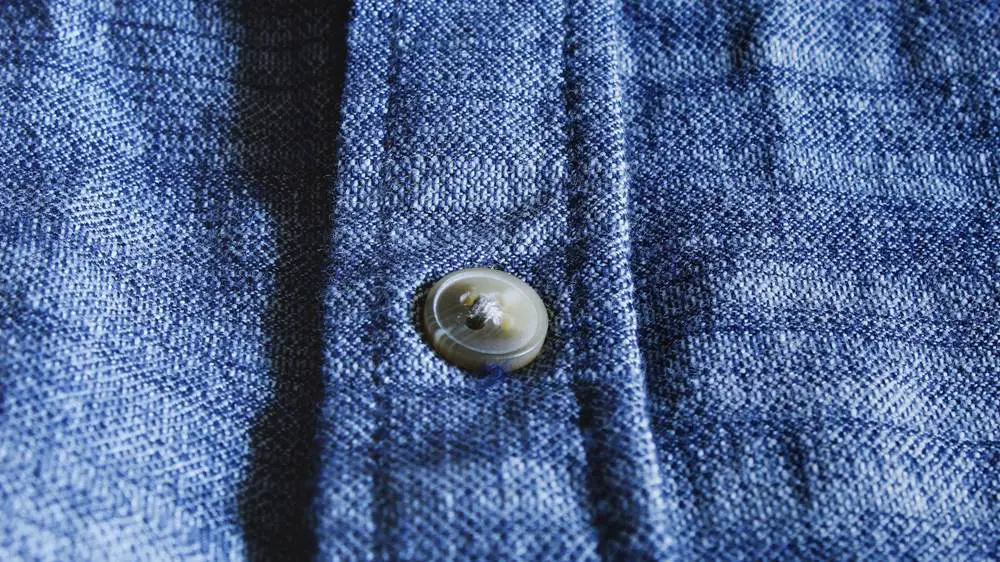
Vintage style clothing is all the rage these days. The distressed, worn look gives garments character and makes them stand out. While genuine vintage pieces can be expensive or tricky to find, the good news is you can make new clothes look vintage with some simple techniques.
In this comprehensive guide, we’ll walk you through multiple methods for making a basic shirt look like a vintage find. With a few supplies and a little bit of handiwork, you can get the vintage vibe on any shirt in your closet. Read on to learn all our tips and tricks!
Table of Contents
Gather Your Supplies
Before you start the vintage-izing process, gather the following supplies:
- The shirt you want to alter. Choose a basic tee or button-down in a solid color or simple pattern. Stay away from brand new looking shirts. Lightweight, soft, worn-in fabrics work best for achieving a vintage look.
- Scissors. For cutting and fraying techniques.
- Sandpaper. To lightly abrade and distress different areas.
- Bleach. For lightening and fading effects. Opt for concentrated liquid bleach.
- Tea bags. For staining and aging. Black tea works best.
- Rubber bands. For sectioning off areas you want to bleach or dye.
- Sponge brush. For applying bleach or dye.
- Tweezers. For pulling threads and creating small holes.
- Needle and thread. For visible mending effects.
- Acrylic paint. For adding customized details.
- Craft glue. For attaching embellishments or patches.
With your supplies prepped, it’s time to start the vintage transformation process!
Techniques for Making a Shirt Look Vintage
There are many different ways to make a new shirt look old, worn and vintage. Here we’ll cover the most effective methods. Feel free to combine several techniques on one shirt for amplified effects!
Fraying
Fraying the shirt’s edges and hems is a quick and easy first step. Here’s how:
- Focus on the collar, sleeve cuffs, and bottom hem. Also consider the armholes and side seams if you want an extra distressed look.
- With scissors, make small snips perpendicular to the fabric edge. Space the snips about 1/4 inch apart.
- Avoid cutting all the way through the fabric. Just nip into the edge so threads start loosening.
- Once snipped, gently pull and tug on the cuts to encourage more unraveling of threads.
- For increased fraying, run the edge back and forth over some sandpaper.
Bleaching
Bleach is great for lightening and softening areas of color. Here are some bleaching techniques:
- Full shirt: For an overall lightened effect, dilute 1 part bleach and 4 parts water. Apply to the entire garment with a sponge brush. Let it sit 5-10 minutes before rinsing.
- Sections: Twist a rubber band around sections you want to focus bleach on, like the sleeves or hemline. Sponge on bleach, let sit briefly, then rinse.
- Spots: For localized fading, dip a q-tip in bleach and dab onto specific spots. Rinse promptly.
- Splatter: Flick drops of diluted bleach onto the shirt. Cover with plastic wrap, let sit, then rinse. Wear gloves!
Staining
For vintage discoloration, tea staining is an easy option:
- Brew black tea, let it cool. Dip shirt sections in tea. For variation, try tying off sections with rubber bands first.
- Set shirt aside to dry. The tea will leave behind a faded, yellowish stain.
- Soak shirt afterwards in vinegar water to neutralize and set the stain.
For more intense staining, try dabbing on some acrylic paint. Water down the paint and apply sparingly for a translucent, aged effect.
Sanding
Gently rubbing with sandpaper in key spots can mimic vintage wear and distress:
- Try the hems, collar points, cuffs. Avoid abrading through the fabric.
- For focused fading, wrap sandpaper around eraser end of pencil to delicately scuff fabric.
- Distress seams and edges further by running over them with scissors.
Visible Mending
Embrace tears, holes or thin spots by mending them in an eye-catching way:
- Mark outline of damage with chalk. Carefully cut away ragged fibers inside the outline.
- Cut colorful scrap fabric to fit underneath hole. Blanket stitch scrap in place with contrasting thread.
- For tears, stitch along them with big, visible sloppy stitches in a fun colored thread.
Embellishments
Add vintage flair with do-it-yourself custom details:
- Painting: Use acrylic paints to hand letter words, numbers or designs. Practice first on paper.
- Patches: Cut shapes from fabric scraps and blanket stitch them on as patches. Try flowers, stars, hearts.
- Studs: Affix decorative studs, rhinestones or buttons with craft glue in random patterns.
- Stenciling: Make DIY stencils and sponge paint through for distressed patterns and prints.
With the above techniques, transform a basic tee into something with retro vibes. The more techniques you combine, the more vintage it will look. Here’s a helpful checklist:
Vintage Shirt Transformation Checklist

- Fray collar, cuffs, hems
- Bleach random light spots
- Tea stain garment lightly
- Sand edges, seams, sleeves
- Visible mending at shoulders
- Paint on design
- Sew on patches
- Affix studs and buttons
- Add stenciled design
Customize this list to your shirt and creative vision. Remember, there’s no right or wrong way to get the vintage look. Now let’s go over some pro tips and frequently asked questions.
Pro Tips for Vintage Shirt Success
Follow these pro tips to nail the vintage shirt transformation:
-
- Start subtle – it’s easy to overdo it. Add effects gradually and look at the overall impact.
- Layer effects – combine multiple techniques for a more authentic vintage vibe.
- Distress evenly – make sure to fade and wear both sides rather than just the front.
- Mind the pits – go very light on distressing underarms to avoid massive holes.
- Repeat rinses – be thorough in rinsing out bleach or dye since it can continue developing.
- Set stains – soak garment in vinegar solution after staining to seal in effects.
- Avoid the dryer – line dry instead to prevent excessive fraying or shrinkage.
Frequently Asked Questions
What type of shirt works best?
Lightweight, soft, previously worn shirts tend to vintage-ize the easiest. Stay away from stiff, thick fabrics that won’t fray well.
Does it matter what color the shirt is?
Lighter colors show distressing effects better. But you can still achieve a worn, vintage look on darker shirts too.
How durable is the vintage effect?
It depends on the techniques used. Some may last through several washes, while others like staining may gradually fade over time.
Should I dress the shirt after?
Yes! Use fabric medium diluted with water and applied overall to soften fibers after distressing. This helps prevent further damaging.
How can I avoid over-bleaching?
Dilute bleach thoroughly, test in an inconspicuous area first, watch it closely, and rinse promptly once desired effect is achieved.
Conclusion
With the right techniques and a bit of creativity, you can make any basic shirt look like a cool vintage find. Transforming new garments is also a sustainable way to add retro flair to your wardrobe.
Hopefully this guide provides lots of tips and inspiration to DIY your own vintage shirt creations. Fray, bleach, stain, sand and embellish until you get the worn-in, one-of-a-kind look you love.
So grab those scissors, put on some tunes, and enjoy the process. Don’t be afraid to experiment – there’s no wrong way to vintage-ize a shirt!